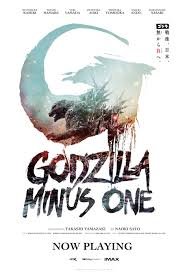Image credit: NBC News
In J.R.R. Tolkien’s epic fantasy world of Middle-earth, goblins from The Lord of the Rings play a significant role in shaping the narrative and atmosphere. These malevolent creatures, often interchangeable with Orcs, have captured the imagination of readers and viewers alike since their introduction in The Hobbit and their continued presence throughout The Lord of the Rings trilogy. With their grotesque appearance and malicious nature, goblins serve as formidable adversaries for heroes like Bilbo Baggins, Gandalf, and the Fellowship of the Ring.
This article aims to explore the origins and creation of goblins in Tolkien’s mythology, delve into their characteristics and appearance, and examine their role in Middle-earth’s history. We’ll look at their connections to other evil forces such as Sauron and the Balrogs, their presence in iconic locations like Moria and the Misty Mountains, and their interactions with various characters throughout the saga. By taking a closer look at these creatures, we’ll gain a deeper understanding of their place in the rich tapestry of Tolkien’s legendary world.
Origins and Creation of Goblins
The origins and creation of goblins in J.R.R. Tolkien’s Middle-earth mythology have been a subject of debate and speculation among fans and scholars alike. Tolkien himself grappled with the concept, never fully settling on a definitive explanation for their existence. However, several theories and ideas emerged throughout his works.
Morgoth’s Corruption of Elves
The most widely accepted theory suggests that goblins, also known as Orcs, were originally Elves corrupted by Melkor, later known as Morgoth. This dark lord, in his hatred for Eru Ilúvatar’s creations, captured Elven prisoners and subjected them to unspeakable tortures in the depths of Angband. Through malevolent magic and cruelty, Melkor twisted their forms and minds until they became the antithesis of their former selves. This process was particularly horrific, involving physical and mental anguish that stripped away their inherent beauty and grace.
Theories on Goblin Creation
Alternative theories on goblin creation exist within Tolkien’s legendarium. One such theory proposes that Melkor created goblins through a form of dark alchemy, combining elements of Dwarves and Elves with “murder and mud.” This approach suggests a more artificial origin, devoid of the spiritual essence found in Eru’s creations.
Tolkien struggled with the philosophical implications of goblin origins. If they were indeed corrupted Elves or Men, it would imply they possessed souls and could not be inherently evil. This conflicted with the established rule that only Eru Ilúvatar could create life, raising questions about the nature of evil in Middle-earth.
Goblins in Tolkien’s Early Works
In Tolkien’s earlier writings, particularly “The Hobbit,” the term “goblin” was predominantly used. These creatures were described as “big, ugly creatures, cruel, wicked, and bad-hearted.” As Tolkien’s mythology evolved, he began to use “Orc” more frequently in “The Lord of the Rings,” though the terms remained somewhat interchangeable.
The goblins of the Misty Mountains, featured prominently in “The Hobbit,” were said to have inhabited their underground strongholds since the War of Wrath in the First Age. Over time, these Orcs degenerated into gnome-like beings, twisted by evil and adapted to their subterranean existence.
Characteristics and Appearance
Physical Features
Goblins from The Lord of the Rings, also known as Orcs of the Misty Mountains, are grotesque creatures with distinctive physical characteristics. These beings are described as big and ugly, with a sallow or swart complexion. Their appearance has evolved over time, becoming more gnome-like and twisted by evil. In Peter Jackson’s film adaptations, goblins are portrayed with flesh-toned skin riddled with various skin diseases and deformations. They often have harelips, mismatched or skewed eyes, and crooked-growing fingernails, making them appear even more grotesque than their counterparts in The Lord of the Rings trilogy.
The size of goblins varies, with some reaching almost human height or even greater. In The Hobbit films, the Great Goblin is depicted as a towering, blobbing mass of fat, standing at almost four times the size of a normal goblin and thrice that of a man. This character’s physical stature emphasizes his role as a leader among his kind.
Behavioral Traits
Goblins are characterized by their cruel, wicked, and bad-hearted nature. They exhibit a range of negative behaviors, including anger, mockery, and a propensity for violence. The Great Goblin, as portrayed by Barry Humphries in the film adaptation, displays a mix of emotions, from sneering and singing to exploding with fury. This character’s behavior is described as that of a theater actor, emphasizing the dramatic and exaggerated nature of goblin personalities.
These creatures are known for their relentless pursuit of enemies. In The Hobbit, goblins from various towns in the Misty Mountains were informed of a reward for capturing Thorin, leading to a persistent chase of Gandalf, Bilbo, and the Dwarves. Their determination and hostility are evident in their continued efforts to hunt down Thorin’s Company, even after initial failures.
Goblin Culture and Society
Goblins have established a complex social structure within their underground dwellings. They inhabit deep subterranean caverns beneath the Misty Mountains, with notable locations including Goblin-town, Moria, Mount Gram, and Mount Gundabad. These strongholds serve as the centers of goblin society and have been their homes since the War of Wrath in the First Age.
The goblin hierarchy includes leaders such as the Great Goblin, who rules over Goblin-town. This leadership structure suggests a form of governance within their communities. Goblins also form alliances with other evil creatures, such as the Wargs, to increase their strength and reach. The presence of rewards for capturing specific individuals indicates a system of communication and shared goals among different goblin groups.
Role in Middle-earth’s History
Goblins played a significant role in shaping the history of Middle-earth, often serving as formidable adversaries to the Free Peoples. Their presence and actions had a lasting impact on the conflicts and alliances that defined the ages.
Conflicts with Other Races
Throughout the ages, goblins engaged in numerous conflicts with other races of Middle-earth. After Melkor’s defeat, they established kingdoms in various mountain ranges, including notable strongholds like Goblin-town near the High Pass above Rivendell, Mount Gundabad, and the former Dwarf-kingdom of Moria. These locations became centers of goblin activity and sources of conflict with neighboring races.
One of the most significant conflicts involving goblins was the War of Dwarves and Orcs. This war began when the goblin chieftain Azog killed King Thrór, leading to a prolonged struggle between the two races. The conflict culminated in a decisive battle where Dáin II Ironfoot beheaded Azog, dealing a significant blow to goblin power.
Major Battles Involving Goblins
Goblins participated in several major battles throughout Middle-earth’s history. During the Second Age, they fought against Elves, Dwarves, and Men under Sauron’s command. In the Third Age, they were involved in numerous conflicts, including the Battle of the Five Armies. Under the leadership of Bolg, son of Azog, goblins from Gundabad joined the battle, seeking revenge for their fallen king.
Alliances with Dark Forces
Goblins frequently allied themselves with dark forces in Middle-earth. During the Second Age, they served under Sauron’s control, led by powerful Orcs from Mordor. In the Third Age, as Sauron’s influence grew once again, many goblins were compelled into his service. Some also aligned themselves with the wizard Saruman, who sought to rule Middle-earth.
These alliances extended to other evil creatures as well. In The Hobbit, the goblins of Goblin-Town formed an alliance with the Wargs to attack nearby Woodsmen. This cooperation between different evil races made them an even greater threat to the Free Peoples of Middle-earth.
Conclusion
Goblins from The Lord of the Rings have a lasting impact on the rich tapestry of Tolkien’s legendary world. Their origins, tied to Morgoth’s corruption of Elves, and their evolving role throughout Middle-earth’s history showcase the complexity of these malevolent creatures. From their grotesque appearance to their wicked nature, goblins serve as formidable foes for the heroes of Middle-earth, adding depth to the ongoing struggle between good and evil.
The exploration of goblin culture, their alliances with dark forces, and their involvement in major conflicts sheds light on their significance in Tolkien’s mythology. Their presence in iconic locations like Moria and the Misty Mountains, along with their interactions with various characters, helps to create a more immersive and believable fantasy world. In the end, goblins remain a testament to Tolkien’s skill in crafting multifaceted antagonists that continue to captivate readers and viewers alike.
Also Read: gnats vs fruit flies
FAQs
- Where is Goblin-town located in the Lord of the Rings?
Goblin-town is situated beneath the Misty Mountains and is inhabited by Orcs. Governed by the Great Goblin, this expansive network of tunnels and caverns extends through the mountains and includes a back exit near the Eagle’s Eyrie in Wilderland, providing both an escape route and access to the surrounding lands. - Who is the peculiar goblin-like character in the Lord of the Rings?
Gollum, originally introduced in Tolkien’s 1937 novel “The Hobbit,” is a creature known for his unique manner of speaking. His character plays a significant role in the sequel, “The Lord of the Rings.” - What are the Goblins from the Lord of the Rings?
In Tolkien’s Middle-earth, the Goblins, also referred to as the Orcs of the Misty Mountains, are a distinct group of Orcs notorious for their grotesque appearance. Predominantly residing in the Misty Mountains, they inhabit areas such as Goblin-town, Moria, Mount Gram, and Mount Gundabad. - Where is the goblin Cave described in The Hobbit?
The goblin Cave, known as Goblin-town, is a settlement of the Northern Orcs located in the southern part of the Misty Mountains, near the Mountains of Angmar. It comprises a complex network of branching caves and tunnels that stretch from the High Pass in the northern section of the mountain range.
























+ There are no comments
Add yours